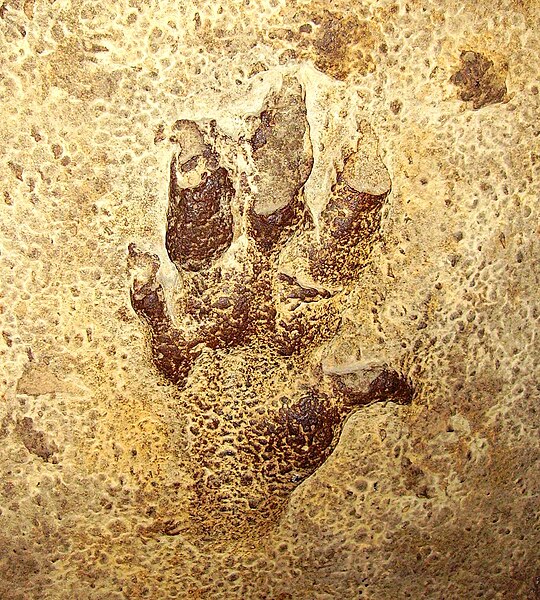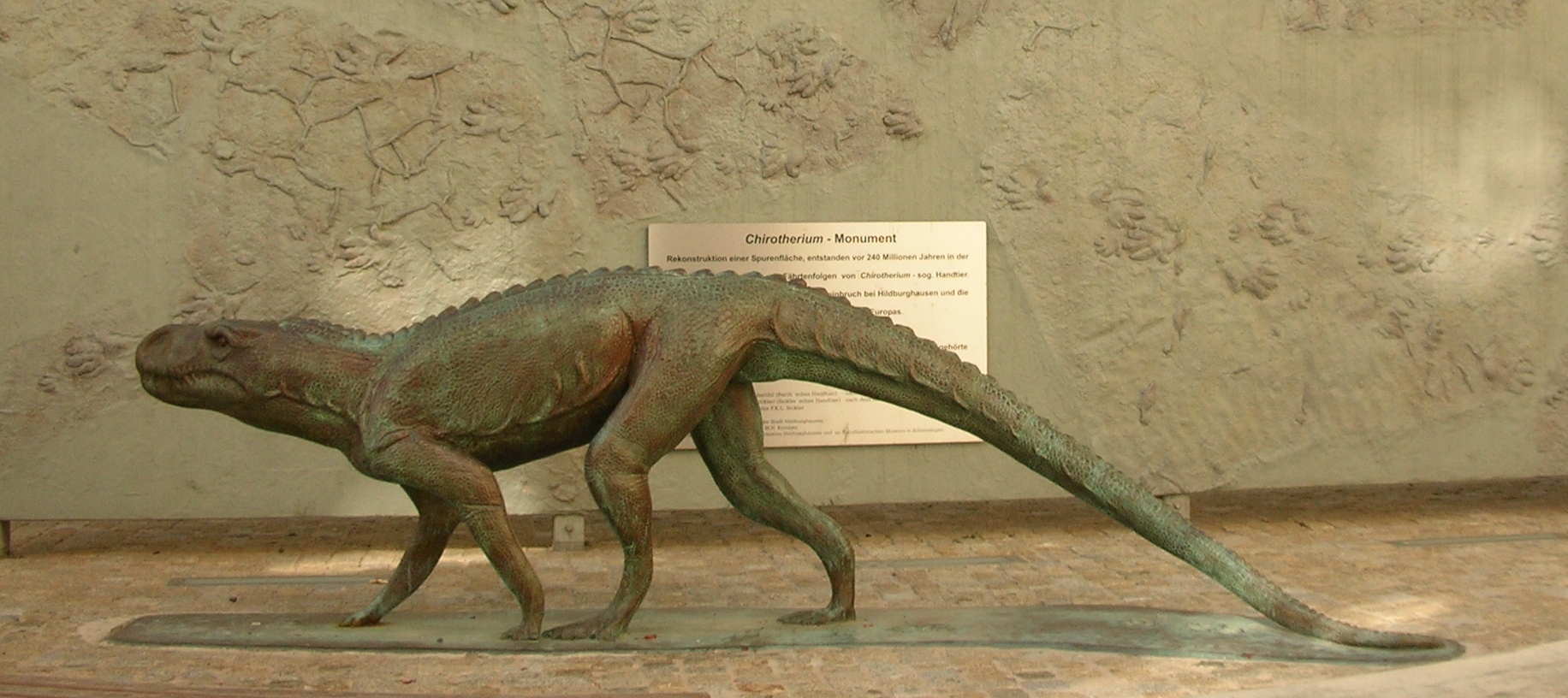Actually this one is not really important and I thought about publishing this post altogether. Although it is rather a popular problem than a scientific or academic one, it still teases me. You can find it everywhere: Newspaper, blogs and wikipedia for instance. Trackways of the ichnogenus Chirotherium are constantly mistaken for an Archosaur or related creatures.
For instance, the german Wikipedia article on Chirotherium: Fossilised footprint (ichnite) of the ichnogenus Chirotherium, an archosaur of the Lower Triassic, first found 1833 in Hildburghausen (Thuringia, Germany).
This is just wrong. An archosaur cannot be an ichnogenus.
Unfortunately, Chirotherium literally means something like "hand beast" or "hand animal". However, the term Chirotherium is scientifically used for a certain type of trackway(s), which is found in Sediments with a Triassic age, ranging from Olenikian to Anisian (KLEIN & HAUBOLD, 2007). In fact, Chirotherium is the first scientifically described trackway (KAUPP, 1835) and, by the form of the pes imprints (rear leg) resembling human hands, it animated the early palaeontologists imagination for the mysterious ancient beast that once left its trackway on the wet sand of the vast Triassic plain. In a way the "hand animal" is a chimera of those early days of palaeontological research. From a modern point of (ichno)taxonomic view, the scientific name Chirotherium, however, is attributed to the trace fossil only, although the trace maker most likely was an archosaur of some sort. Yes, you are right, this is scientific quibble but still; it is not correct.
Yours Ichnogeek!
 Chirotherium (pes imprint) from the Triassic of Germany.
Chirotherium (pes imprint) from the Triassic of Germany.  The "Chirotherium Monument" with a reconstructed "hand beast" (Hildburghausen, Germany)
The "Chirotherium Monument" with a reconstructed "hand beast" (Hildburghausen, Germany)References:
Kaup, J.J., 1835: Über Thierfährten bei Hildburghausen. Neues Jahrbuch für Mineralogie, Geognosie, Geologie und Petrefaktenkunde. v. 1835, pp. 227-228.
Klein, H., Haubold, H., 2007: Archosaur footprints - potential for biochronolgy of Triassic contintal sequences. In Lucas, S.G., Spielmann, J.A., (eds): The Global Triassic. New Mexico Museum of Natural History and Science Bulletin 41.



No comments:
Post a Comment